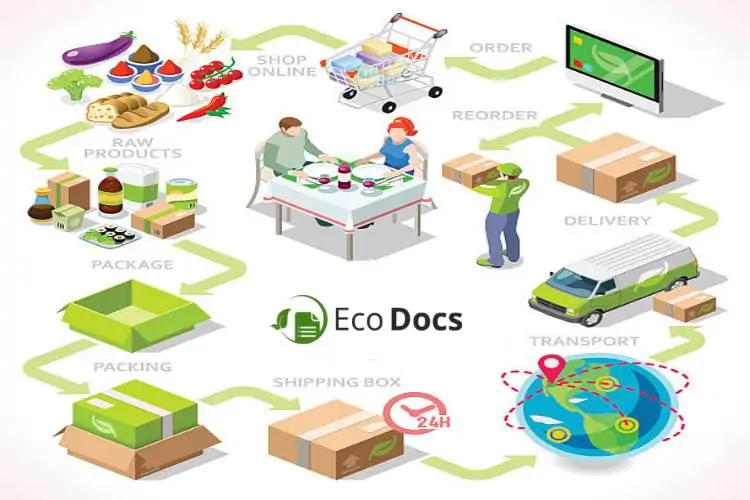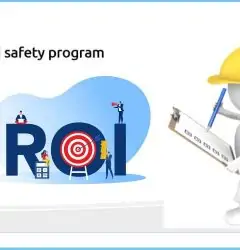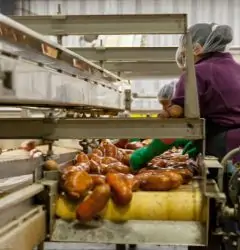16 Nov

Food traceability is one of the most pressing issues facing the global food industry. It’s important to know where the food you purchase comes from and where it’s been before you eat it. For this reason, there’s a need for an effective traceability system that can keep pace with production speeds.
A flexible and modular traceability solution may help food firms improve their supply chain efficiency and emergency recall strategy without putting pressure on their production capacity.
The business sector is constantly adapting to new digital platforms and solutions. If a company wants to remain competitive in the next decade, it must implement digitalization projects throughout its organization. If you don’t have this knowledge, you won’t succeed.
What is Food Traceability?
Food traceability is the ability to follow a food product and its components back and forth through the supply chain at every step.
A food product’s or ingredient’s traceability involves documenting and linking the supply and distribution channels. This method helps food producers, suppliers, and other stakeholders maintain quality control while producing, packing, and delivering products.
In the case of a foodborne illness pandemic or contamination incident, efficient product tracing aids government agencies and those that produce and sell food in promptly discovering the source of the product and the site of contamination. The tainted product should be swiftly removed from the market to reduce the number of foodborne illness cases.
Moreover, you’ll see an improvement in operational efficiency as you better understand what’s going on inside your company.
It is possible to bolster marketing messages if food traceability systems are in place. A “farm-to-table” marketing plan, for example, may portray your company as a corporation that emphasizes careful product procurement and safe manufacture.
A food traceability campaign might help you build a better reputation with your target audience. You may use this strategy to build a strong brand and differentiate your firm from the competition.
Several companies employ traceability initiatives to keep track of and monitor data. Each member of the organization can now better understand inventory needs, demand, and predictions thanks to improved analytics and reporting.
Food Traceability Software
Food traceability software may help companies understand the origin, production, shipment, and storage of their goods in the food industry. This reduces the likelihood of selling contaminated or expired products to customers. Investment in food traceability software might have a big influence on your organization’s bottom line.

Key Features of Food Traceability Software
1. Keeping Track of Your Inventory
You can improve inventory management by using a food traceability template and system with inventory management. With the aid of an RFID or QR code system, employees will be able to access critical information about stored or delivered products with only a few taps of their fingers.
Moreover, each member of the organization can now better understand inventory needs, demand, and predictions thanks to improved analytics and reporting. Moreover, a good ERP system will be able to integrate with a transport management system, enabling logistics and receiving teams to access shipment-specific information.
A third-party logistics company will benefit from this interface as well. Revolutionary food systems have made it easier than ever for food companies to keep track of and organize their inventory. When a consumer removes a product from a store shelf, it will remain in the system until that customer returns it.
2. Supply Chain Prioritization
Traceability creates a new level of supplier accountability, which increases customer trust. Furthermore, food traceability platforms need to include a feature that helps firms keep track of sourcing restrictions.
Using this information, a food firm may make better decisions about which suppliers to work with at any point in the supply chain. With these features, the buying process is streamlined and expedited.
Moreover, a company’s suppliers and distributors may be evaluated using metrics such as on-time delivery percentage and shipment accuracy. At each stage of the supply chain, a company may assess how much of a certain product it has available. This might help with forecasting and supply chain flexibility.
3. Administration of the Transportation System
A transport management system, which provides information on shipments, planned routes, schedules, and priority lists, is another essential component of a complete and functional ERP system.
Spoilage is a primary source of financial loss in the food and beverage business because of poor transportation coordination. However, using transport management, food suppliers may offer logistics companies the information they need to better care for food deliveries and ensure that they get to their destinations as promptly as possible.
4. Assembling a Strategy in Advance
The logistics of getting your products to market are essential. Key areas in our food supply chain must be identified and traced. Thanks to food traceability software, your business’s ever-changing environment is within your control.
Every aspect of your business may be optimized with food traceability software that has been under development for several years. Your business’s preparation and preparedness are included in food traceability software via clear instructions and a vast network of assistance.
5. Reporting and Analytical Tools
Many parts of company operations benefit substantially from analytics and reporting. Automated reporting systems that link data to processing systems and deliver up-to-date reports at every stage of the route are essential to an effective ERP solution.
To plan, budget, and predict a company’s operational and financial health, ERP systems with good reporting are essential.
6. Accounting
A better corporate resource planning system must also be able to monitor one of the company’s most crucial resources—money. For a food business, accurate and efficient financial management systems are critical since profits rely significantly on accuracy and efficiency.
In an ERP system, useful features include accounts payable and receivable reporting and fixed asset and risk management.
Conclusion
By using a food traceability system, a corporation can keep track of all the food it sells. It offers several immediate advantages, such as improved food safety, enhanced visibility, and less financial risk, among many others.
Therefore, before making a financial commitment of any kind, you should weigh all the advantages carefully. Using the correct software, you may simplify traceability and connect it completely with your organization’s other components.




Ecodocs